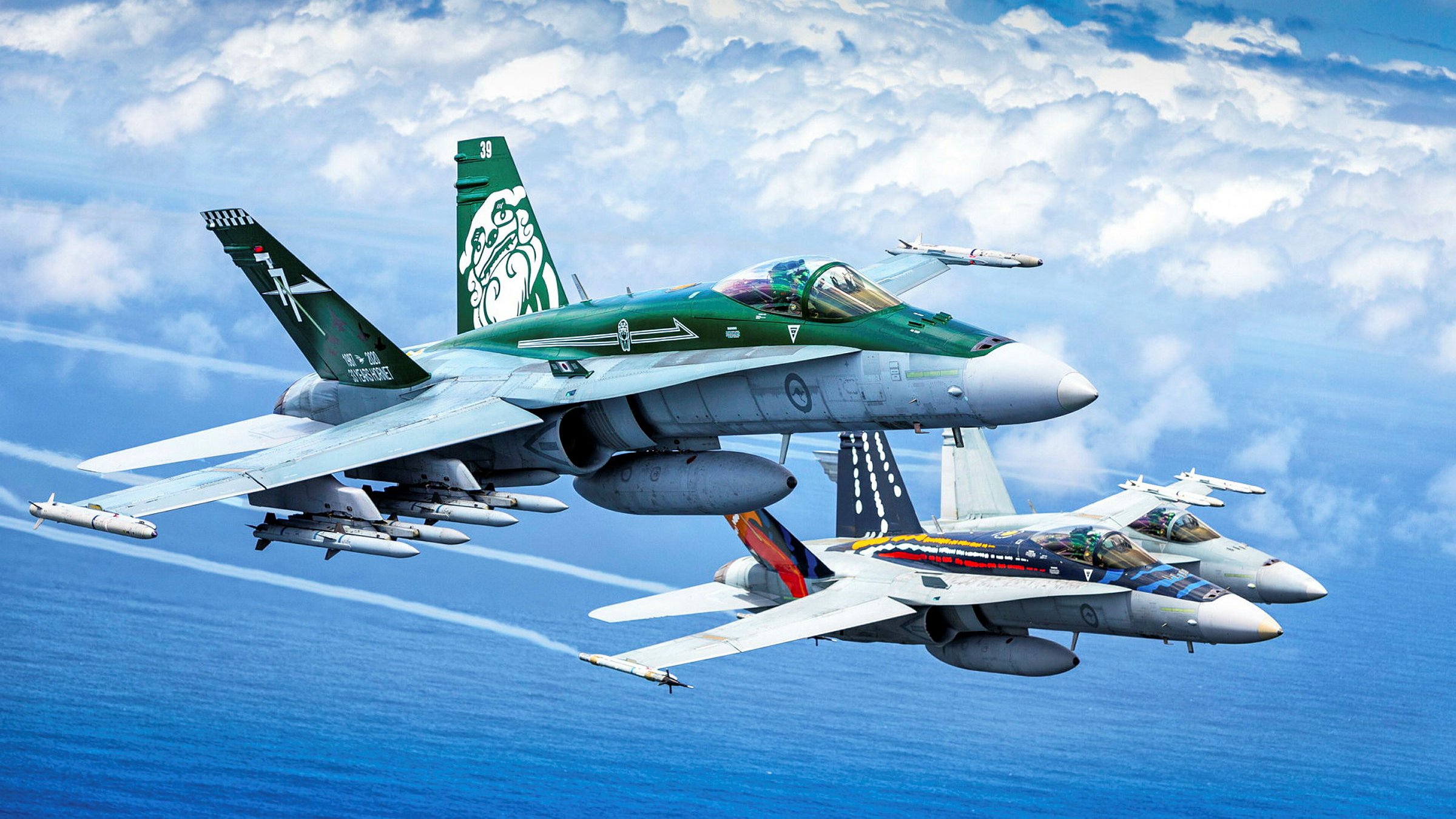Australia has been using Boeing F/A-18A/B fighter jets, also known as ‘Classic Hornets’, for more than three decades. These fighter jets have formed the country’s first line of air defense over the years.
According to the latest reports, the Royal Australian Air Force (RAAF) formally retired its fleet of F/A-18A/B fighter jets on November 29. In recent years, the Classic Hornets were complemented by the advanced F/A-18E/F Super Hornets. Now, these jets are now going to be replaced by the F-35A stealth fighters.
On November 29, RAAF held a ceremony to mark the retirement of the Classic Hornets at the RAAF Base Williamtown New South Wales, which is located in the southwestern region of the country. The event was attended by Peter Dutton, Australian Minister of Defense; Air Marshal Mel Hupfeld, Chief of the Air Force as well as other aviators and industry personnel who have been a part of the Classic Hornets’ tenure over these past years.

The fighter jets which participated in the retirement ceremony belonged to the No. 75 Squadron, based at the RAAF Base Tindal in the Northern Territory State. This airbase will be the last Classic Hornets base to switch to the F-35A Lightning II fighter jets.
Last month, RAAF received the delivery of its 44th F-35A jet from the United States, The EurAsian Times reported. The latest delivery included three aircraft, added to the 77th Squadron of RAAF.
The base is scheduled to stop operating the F/A-18A/B jets by the end of this year and will start catering to US-made F-35A stealth fighters next year. In March 2020, the RAAF had agreed to sell its retired F/A-18A/B Classic Hornets to a training company known as Air USA.
“It is quite fitting that in [the] Air Force’s centenary year we say goodbye to the Classic Hornet, a fighter jet that has been an integral part of Australia’s defense capability for more than three decades”, Air Marshal Hupfeld said during the retirement ceremony.

“As the time of the Classic Hornet draws to a close after nearly 408,000 total flying hours, it’s time to for the transition to the advanced lethality, survivability, and supportability delivered by the F-35A Lightning II,” Hupfeld added.
Australia had received its first two F/A-18A/B Hornets from the US on June 6, 1984. Over the next three decades, 71 Hornets participated in various military operations and exercises with the help of the airmen from No. 3, 75 and 77 Squadrons, and No. 2 Operational Conversion Unit.
The F/A-18A (single-seat) and the F/A-18B (twin-seat) have played a major role in strengthening Australia’s air combat capabilities for more than a third of the RAAF’s 100-year history, capable of performing air-to-air and air-to-ground missions, Aviacionline reported.
Air Combat Group Chief of Staff, Group Captain Jason Easthope, said that the Classic Hornets “were a capable aircraft and served the Air Force with distinction”. “Over the past 20 years, Hornets have served in multiple operations overseas and at home, including our contribution to strike missions in Operations Falconer and Okra, which was significant because Australia had not dropped bombs in combat since the Vietnam War”, Group Captain Easthope said.
“In Operation Okra, F/A-18A/B Hornet squadrons flew 1937 missions and more than 14,780 flight hours, delivering approximately 1,600 munitions”, he added.
2021 – the end of an era.
At the end of this year our F/A-18A/B Classic Hornets are retiring from service, as we transition to the fifth-generation F-35A Lightning II.
Stay tuned for details on where & when you can see their final flying displays. #AusAirForce #FighterFriday pic.twitter.com/F1N2aiFDBJ
— Royal Australian Air Force (@AusAirForce) November 12, 2021
Speaking at the ceremony, Air Vice-Marshal Joe Iervasi, Air Commander Australia, who is himself an experienced F/A-18A/B pilot, described the jets’ period of service with the RAAF.
“While I’m sad to see this incredible aircraft end its role as a sentinel of Australian skies, it’s an exciting time for [the] Air Force as we enter our second century with the F-35A delivering combat airpower as part of a networked joint force, to assure the ADF’s ability to deter or defeat threats to Australia’s interests”, he said.
In February 2003, RAAF Classic Hornets from No. 75 Squadron were deployed to the Middle East under Operation Falconer. These aircraft were redeployed to Syria and Iraq a decade later. Between 2014 and 2018, the Classic Hornets carried out 1,937 missions over the Middle East, according to The War Zone.
- Written by Kashish Tandon/EurAsian Times Desk
- Contact the author at: kashishtandon21@gmail.com
- Follow EurAsian Times on Google News




